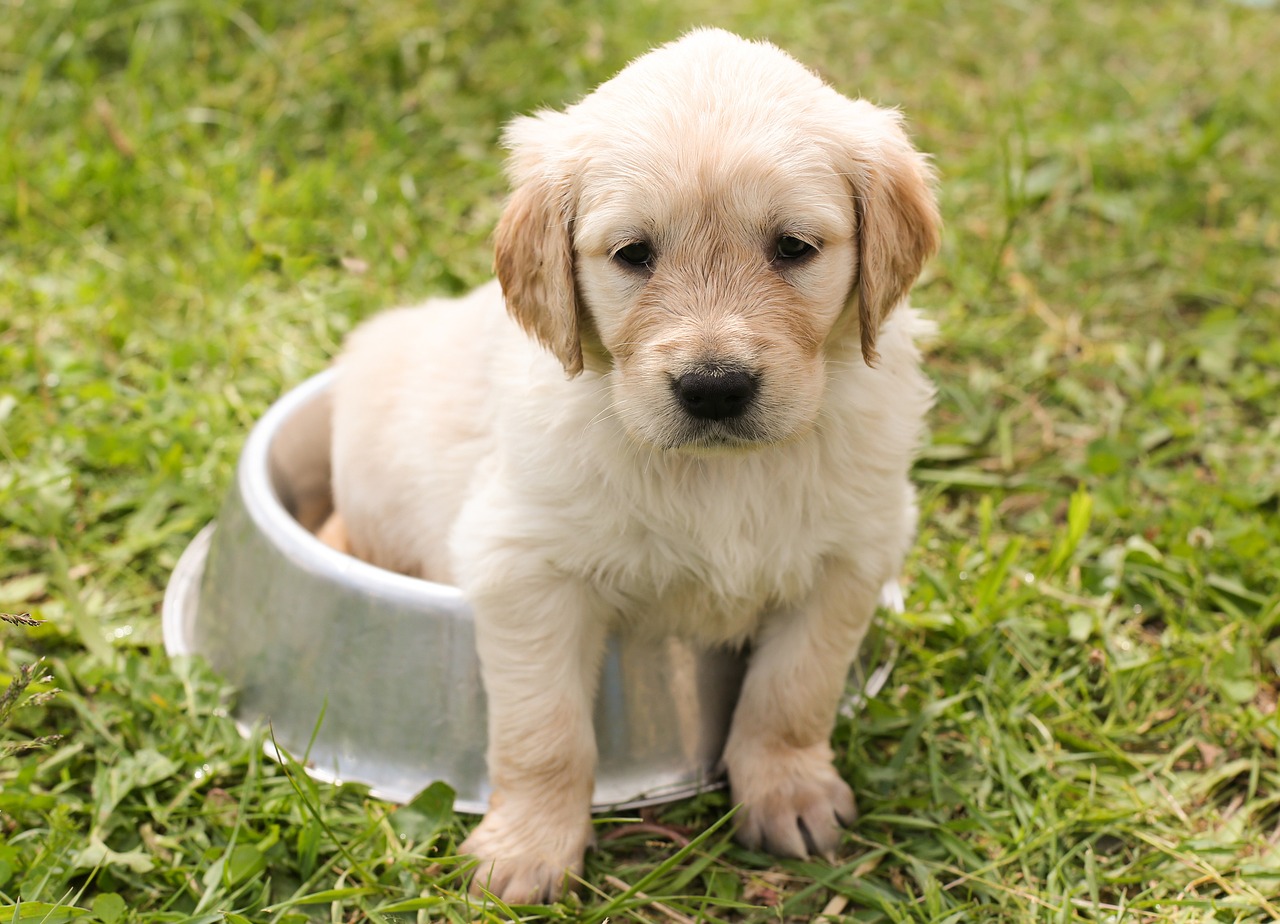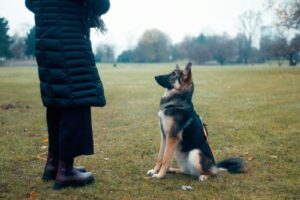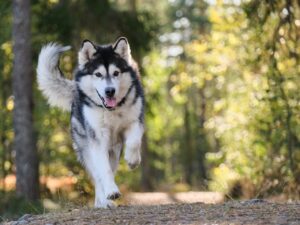Potty training your dog or puppy can be a challenging task, but with the right approach and consistency, it can be a rewarding experience for both you and your pet.
Whether you have a new puppy or an older dog, the key to successful potty training lies in patience, positive reinforcement, and a clear understanding of your pet’s needs.
In this blog post, we will explore 7 quick tips to help you potty train your dog or puppy effectively.
Table of Contents
Why Potty Training?
Potty training is an essential part of raising a well-behaved and happy dog. It involves teaching your dog where and when it is appropriate to relieve themselves.
Proper potty training not only prevents accidents in the house but also strengthens the bond between you and your pet. Consistency and positive reinforcement are crucial when potty training your dog or puppy.
Tip 1: Establish a Routine
Potty train your dog or puppy by establishing a consistent routine for feeding, playtime, and bathroom breaks. Dogs thrive on routine, and by feeding them at the same times each day, you can predict when they will need to relieve themselves. Take your dog outside first thing in the morning, after meals, and before bedtime.
Sample Training Schedule
Morning: Take your dog outside immediately upon waking up.
After Meals: Schedule bathroom breaks shortly after your dog finishes their meals.
After Playtime: Allow for a bathroom break after active play sessions.
Before Bedtime: Take your dog outside for one final bathroom break before bedtime.
Tip 2: Choose a Designated Bathroom Area
Designate a specific spot in your yard or outside your home where you want your dog to relieve themselves. Encourage your dog to use this spot by consistently taking them there for bathroom breaks. Using the same area each time will help your dog understand where they are supposed to go.
Tip 3: Use Positive Reinforcement
When your dog or puppy successfully goes to the bathroom in the designated area, be sure to reward them with praise, treats, or playtime. Positive reinforcement helps your pet understand that they have done something good and encourages them to repeat the behavior.
Tip 4: Supervise and Anticipate Needs
Keep a close eye on your dog, especially during the early stages of potty training. Look for signs such as sniffing, circling, or whining, which indicate that they need to go outside. By anticipating their needs, you can proactively take them to the designated bathroom area, reducing the chances of accidents indoors.
Tip 5: Clean Accidents Promptly
Accidents are inevitable during the potty training process. When accidents occur, it’s important to clean them up promptly and thoroughly to remove any lingering odors. Using an enzymatic cleaner can help eliminate odors and discourage your dog from repeating the behavior in the same spot.
Tip 6: Avoid Punishment
Avoid punishing your dog for accidents during potty training. Punishment can create fear and anxiety in your pet, making the training process more challenging. Instead, focus on positive reinforcement and gently redirecting your dog to the designated bathroom area when accidents happen.
Tip 7: Be Patient and Consistent
Potty training takes time, and every dog learns at their own pace. Be patient and consistent in your approach, and don’t get discouraged by setbacks. Consistency in your routine, positive reinforcement, and a calm, patient attitude will help your dog understand what is expected of them.
Additional Tips for Older Dogs
Potty training older dogs may require some additional considerations:
Consult a Veterinarian: If your older dog is having accidents indoors, it’s essential to rule out any underlying medical issues. Consulting a veterinarian can help determine if any health concerns are contributing to the accidents.
Adjust Expectations: Older dogs may have age-related issues such as decreased bladder control. Be patient and understanding, and be prepared to make accommodations for their needs.
Frequent Bathroom Breaks: Older dogs may need more frequent bathroom breaks due to age-related changes. Be attentive to their signals and provide them with more opportunities to relieve themselves.
Top Product Picks for Dog Potty Training
1. Puppy Pads or Training Pads:
These absorbent pads can be placed indoors to provide a designated area for your puppy to relieve themselves. They are especially useful for potty training in apartments or during extreme weather.
2. Dog Crate or Playpen:
A crate or playpen can be used to confine your puppy when unsupervised, as dogs instinctively avoid soiling their sleeping area. This can aid in potty training by preventing accidents when you’re unable to closely supervise your puppy.
3. Enzymatic Cleaner:
Accidents are inevitable during potty training. Enzymatic cleaners help to effectively remove odors and stains, discouraging your dog from repeating the behavior in the same spot.
4. Treats for Positive Reinforcement:
High-value treats can be used to reward your dog when they potty in the designated area. Positive reinforcement is a key component of successful potty training.
5. Clicker or Training Whistle:
Clickers or training whistles can be used to mark and reinforce desired behavior during potty training sessions.
6. Outdoor Leash and Collar:
Essential for taking your dog outside for bathroom breaks and establishing a routine for outdoor potty training.
7. Potty Training Bell:
A bell hung by the door that your dog can be taught to ring when they need to go outside. This can be a useful tool for teaching your dog to communicate their potty needs.
8. Potty Training Spray:
A potty training spray can be applied to outdoor areas to encourage your dog to relieve themselves in specific spots. This can help establish a consistent potty area.
9. Pet-Friendly Lawn Cleaner:
If you have a yard, a pet-friendly lawn cleaner can help neutralize the effects of pet waste and prevent lingering odors.
10. Training Treat Pouch:
A convenient pouch to hold treats during potty training sessions, making it easy to reward your dog promptly.
By utilizing these potty training products, you can create a supportive and effective environment for potty training your dog or puppy.
FAQs For Potty Training A Puppy Or Dog
How long does it take to potty-train a puppy?
The time it takes to potty-train a puppy can vary depending on the breed, age, and individual differences. On average, it may take anywhere from a few weeks to a few months to fully potty-train a puppy.
Should I use puppy pads for potty training?
Puppy pads can be used as a temporary solution, especially for apartment dwellers or during extreme weather. However, it’s important to transition to outdoor potty training as soon as possible to avoid confusion.
What should I do if my dog keeps having accidents indoors?
If your dog continues to have accidents indoors, it’s essential to rule out any medical issues by consulting a veterinarian. Additionally, reassess your potty training methods and consider adjusting the routine or seeking professional help.
Is crate training an effective method for potty training?
Crate training can be an effective tool for potty training, as it utilizes a dog’s instinct to keep their den clean. However, it’s crucial to use the crate appropriately and not as a punishment.
At what age can I start potty training my puppy?
Potty training can start as early as 8 weeks of age. However, the ability to control their bladder and bowel movements varies among puppies, so it’s important to be patient and understanding of their individual development.
Conclusion
Potty training your dog or puppy requires time, patience, and understanding. By establishing a routine, using positive reinforcement, and being consistent, you can effectively teach your pet where and when to relieve themselves. Remember that accidents are a natural part of the learning process, and with patience and encouragement, your dog will eventually learn to potty-train your dog or puppy. We hope these 7 quick tips help you in your potty training journey.
We would love to hear about your experiences with potty training. Feel free to share your tips and stories in the comments below!
Join our FREE Online Dog Training Workshop and discover simple, effective techniques to raise a happy, well-behaved dog. Whether you’re tackling barking, leash-pulling, or basic obedience, this workshop is packed with expert tips you can start using right away.
✅ What You’ll Learn:
- Proven strategies to eliminate common behavior problems
- Fun training exercises to strengthen your bond
- Answers to your burning training questions in real-time!
Spaces are limited, so don’t wait!
👉 Reserve your spot now and start your dog’s transformation today!






Pingback: Free 30-Day Dog Training Guide - Woofy Tips
Pingback: How to Puppy-Proof Your Home Like a Pro
Pingback: New Puppy Care Tips -Week by Week Plan - woofytips